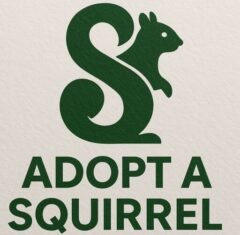How to Make a Squirrel Incubator – DIY Baby Squirrel Heating Setup

Keeping a baby squirrel warm is absolutely essential for its survival, especially during the delicate first few weeks of life. Baby squirrels, like most small mammals, cannot regulate their body temperature until they are several weeks old and fully furred. Without a proper heat source, even a healthy squirrel can quickly become cold, weak, or lethargic which can lead to life-threatening complications such as hypothermia, digestive failure, or even death.
Whether you’ve just brought home a hand-raised baby squirrel for adoption or are caring for a newly born squirrel under guidance, one of the first and most important steps in early care is providing a stable, warm, and secure environment that mimics the warmth they would naturally receive from their mother.
That’s where a DIY squirrel incubator comes in.
The good news? You don’t need expensive equipment or veterinary supplies to make one. With a few common household items, you can easily build an incubator that is safe, effective, and comforting for your baby squirrel. This setup will serve as the squirrel’s main housing area until it becomes strong, active, and well-furred typically one to two weeks after its eyes open.
This guide will walk you step-by-step through how to make a homemade squirrel incubator, using tools like heating pads, soft bedding, and plastic containers. You’ll learn how to control the temperature, provide proper airflow, and ensure your baby squirrel has everything it needs to thrive during this early stage of life.
By following these steps, you’ll not only keep your squirrel warm you’ll help it grow healthy, strong, and fully ready for life in a loving adoptive home.
Supplies You’ll Need for a DIY Squirrel Incubator
- ✅ A 10-gallon plastic tub or aquarium for newborn squirrels
(Use a 20-gallon+ for older babies or litters) - ✅ 2 towels
- ✅ 2–3 soft cloths – cotton, fleece, or flannel (no loose threads!)
- ✅ Heating pad (must NOT have auto shut-off) or a heat lamp
- ✅ A ventilated lid or mesh screen with small holes for airflow
Step-by-Step Instructions
1. Choose a Quiet, Safe Location
Pick a calm spot away from sunlight, drafts, loud noises, pets, or children. Baby squirrels need a peaceful, warm environment to rest and grow.
2. Prepare the Base Layer
Lay a towel on a hard surface (like a desk or low shelf) to protect it from heat.
Place your heating pad directly on top of the towel.
3. Position the Container
Set your plastic tub or aquarium on top of the heating pad, but leave half the container off the pad. This gives the squirrel a choice between warm and cool zones for self-regulation.
4. Line the Inside with Soft Cloths
Add a soft, lint-free cloth across the bottom of the container.
Then, create a little nest or “den” using 1–2 extra soft cloths for the squirrel to crawl under and snuggle into.
5. Cover with a Ventilated Lid
Use a breathable screen, mesh, or a lid with small holes drilled in it. This ensures proper airflow while keeping curious pets or children out.
6. Set the Heating Pad to “Low”
Always keep the heating pad on the lowest setting. Never use a pad with an automatic shut-off feature, as it may cool down unexpectedly, causing hypothermia in the baby.
Optional: Using a Heat Lamp
If you’re using a heat lamp instead of a heating pad:
- Keep the lamp well above the incubator to avoid overheating.
- Use a red bulb to reduce brightness and mimic a darker environment.
- Always allow a cool zone inside the enclosure.
- Provide a soft cloth or blanket the squirrel can crawl under to block light.
Safety Tips & Daily Checks
- Never overheat – temperatures that are too hot or too cold can quickly become deadly.
- Monitor the heating source regularly.
- Watch for loose threads, pet hair, or strings that may wrap around toes. Check paws daily.
- Always keep your baby squirrel incubator away from cats, dogs, reptiles, or other predators.
- Ensure the enclosure is secure and escape-proof as your squirrel becomes more mobile.
When Should You Stop Using the Incubator?
You can stop using the incubator once the baby squirrel is fully furred and active, typically 1–2 weeks after its eyes open. At that point, you can transition them to a larger cage setup with room for movement, play, and bonding.
